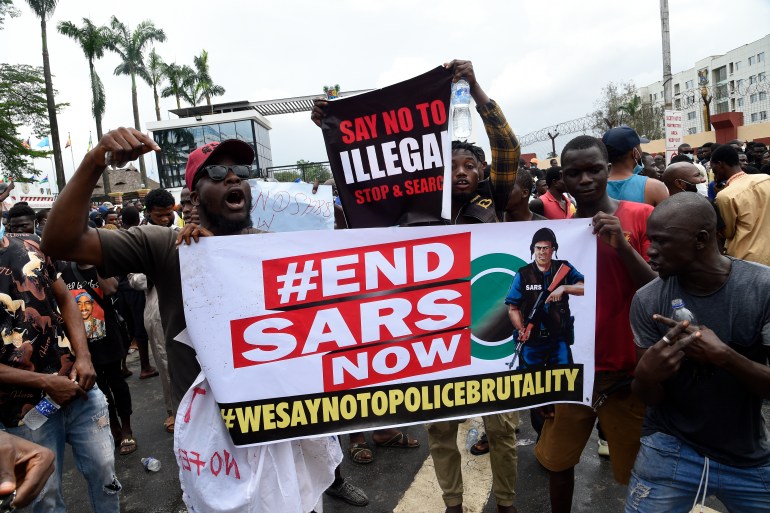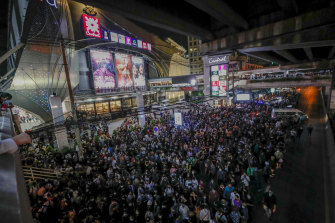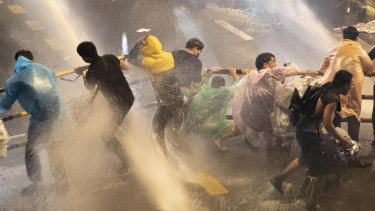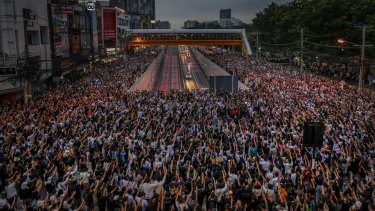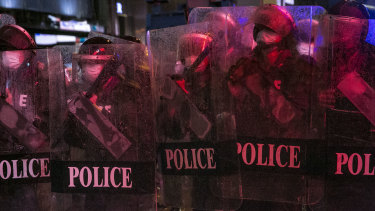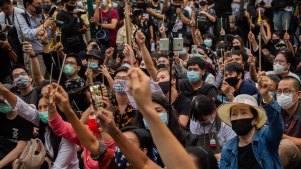[Editor’s Note: This is the first in a series of articles on the Nagorno-Karabakh conflict. Stay tuned for further installments.]
It’s been four years since the conflict in Nagorno-Karabakh (known as Ertsakh in Armenian) was reignited in 2016. In September of this year, fighting over the disputed territory resumed with a vengeance.
Both sides share the blame for the long-term conflict in a region that has changed hands many times in history. Occupied by the Russians in the early 19th century, it was allotted to the Soviet Republic of Azerbaijan by Stalin in the 1920s, even though most of its inhabitants were Armenian. After the Soviet Union disintegrated in the late 1980s, full-scale war erupted between Azerbaijan and Armenia, in which some 30,000 were killed and hundreds of thousands displaced. A ceasefire was declared in 1994, but since then the conflict flared up a number of times. In several of these bouts of fighting, Armenians were cited for attempts at ethnic cleansing.
In 2016, Azeri forces renewed their attack, this time with Turkey’s clear encouragement, and the two armies have since been locked in sporadic warfare that recently became much more intense. Several countries in the region have sided with Azerbaijan, including, weirdly, Iran and Israel, which (reportedly) supplied arms and materiel, but Turkey’s involvement in the fighting is on a much bigger scale.
Turkey’s wide-ranging political and military support for the Azeri attack reflects President Recep Tayyip Erdoğan’s bellicose approach to solving problems in the region. In recent years, Turkey invaded Syria, ostensibly to fight against anti-Turkish Kurdish militias there; has conducted frequent bombing strikes against Kurds in Northern Iraq; has actively supported one side in the Libyan civil war; and is on the verge of war with Greece and Cyprus over oil- and gas-drilling prospects in the Mediterranean and over islands in the Aegean.
Erdoğan has expressed anger at Greek sovereignty over the Aegean islands that were once governed from Istanbul; at Bashar al-Assad’s disastrous control of Syria; at Egypt’s struggle against the Muslim Brotherhood; and at Israel’s illegal occupation of Jerusalem. This, he claimed numerous times, stems from the downward spiral that the region has experienced since the great days of the Ottoman Empire. Despite runaway inflation, a rapidly tanking economy, and Erdoğan’s growing authoritarianism, this kind of talk has garnered mass support for him and his government among the more conservative and even secular nationalist groups in Turkey.
Turkish warfare in Nagorno-Karabakh is a weird mixture of tactics. On the one hand, Turkey sent in thousands of Syrian mercenaries whose salaries it pays. Most of them participated in the Syrian uprising against Assad’s regime over the previous decade under Islamic, mostly jihadi, organizations. Some may still hold on to their Salafi beliefs but have since become soldiers of fortune, fighting for the highest bidder. Some of them are fighting for Turkey in Syria; others were sent to Libya, and the rest are doing Turkey’s work in Nagorno-Karabakh.
Alongside these mercenaries, Turkey uses state-of-the-art drone formations. The long years of fighting in the region have led to the deployment of advanced air-defense systems against rockets, but in recent years Turkey has joined the widening club of states who discovered the great potential of drone warfare.
Drone swarms are used for intelligence gathering, pinpointing targets, shooting, and blowing up assets. Nagorno-Karabakh has become a testing site for this new technology. The weapons wreak havoc on Armenian civilian and military sites. The combination of drones and mercenaries, with some back-office military planning, allows Erdogan to conduct operations on three fronts simultaneously, with very limited involvement of Turkish forces.
Under this Turkish aegis, Azerbaijan seeks to scare away its Armenian inhabitants and annex parts of the region. Hundreds, perhaps thousands of civilians and soldiers have already died in this war. The actions of Israel, Iran, and other countries involved in supplying war materials to both sides should be condemned and stopped, but Turkey’s actions require a more serious response.
In recent years, Turkey has stepped up its military actions in the region, bullying its neighbors, betraying its commitment to NATO and its allies in the West, and killing civilians with impunity. If Turkey does not stop its violent actions, the United States and the European Union should impose sanctions, as punishment and as a deterrence to further escalation. This would not be entirely unprecedented, despite Turkey’s status as a member of NATO. The U.S. effectively penalized Turkey last year by suspending it from the multi-nation F-35 fighter jet program and threatening additional sanctions, after Turkey ignored U.S. pressure and opted to buy the Russian S-400 anti-aircraft system.
[Readers may also be interested in this Oct. 15, 2019 article by Aurel Sari: “Can Turkey be Expelled from NATO? It’s Legally Possible, Whether or Not Politically Prudent.”]
IMAGE: An armed villager arrives at a neighbor’s home destroyed by shelling following an overnight attack during the ongoing fighting between Armenia and Azerbaijan over the disputed region of Nagorno-Karabakh, in the Martakert region, on October 15, 2020, -The origins of a flareup in fighting over Nagorno-Karabakh that has now killed hundreds and threatens to involve regional powers Turkey and Russia are hotly contested and difficult to independently verify. Both sides accuse the other of striking first on Sept. 27 over the ethnic Armenian region of Azerbaijan. (Photo by ARIS MESSINIS/AFP via Getty Images)



